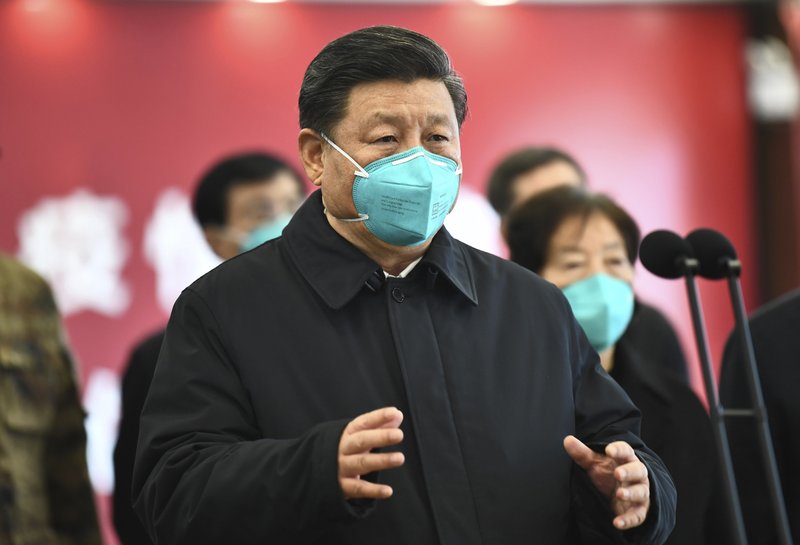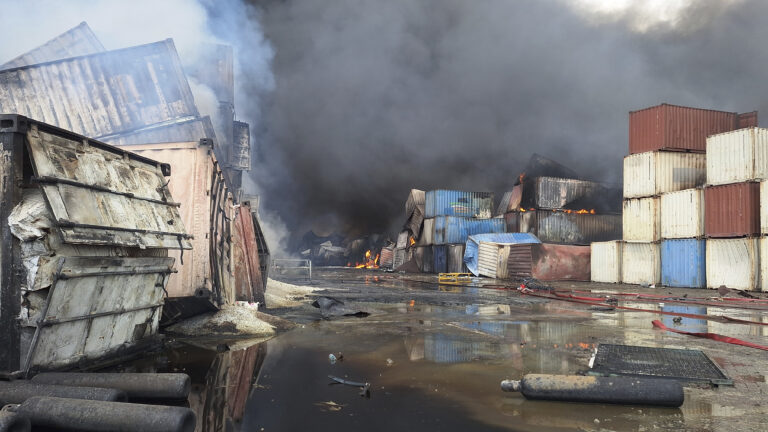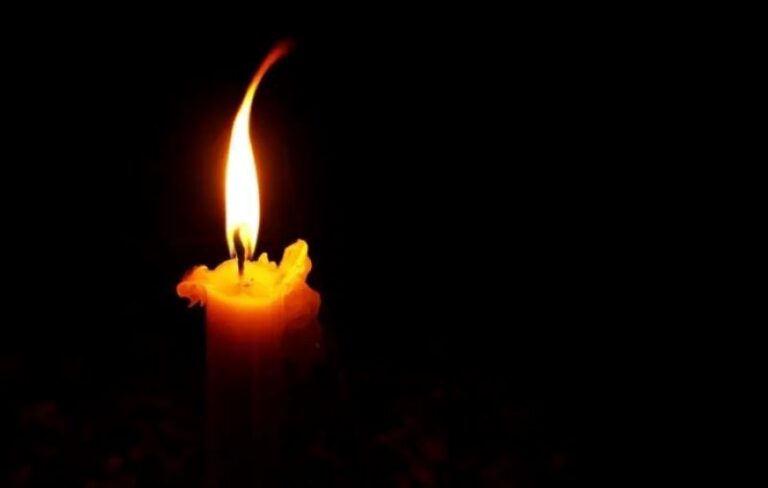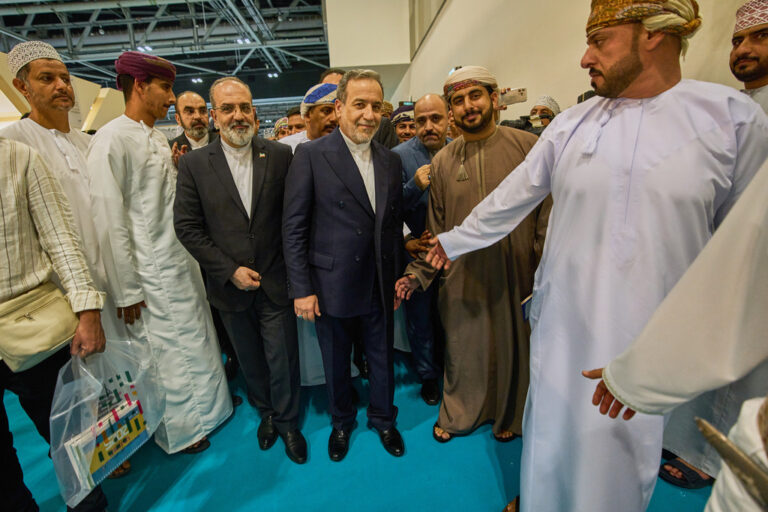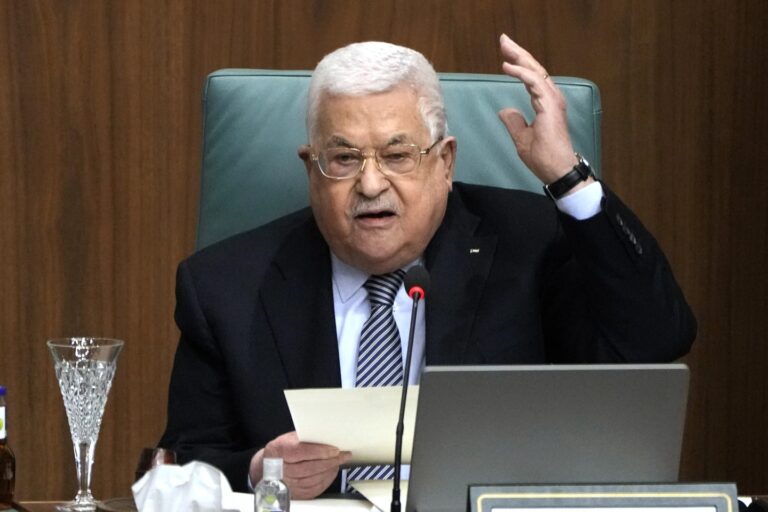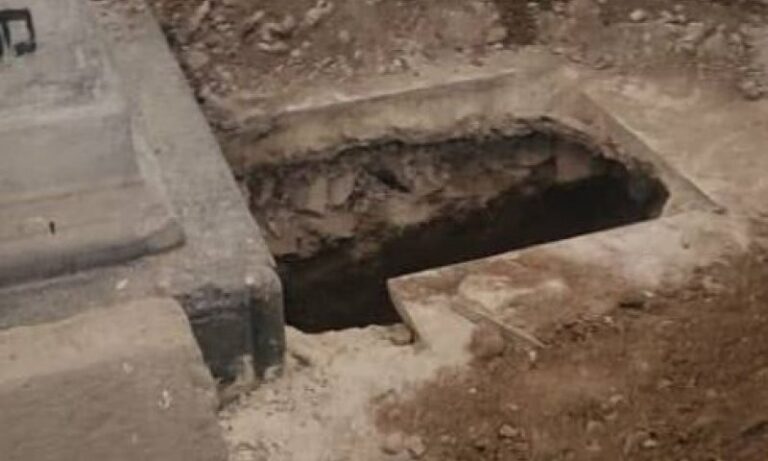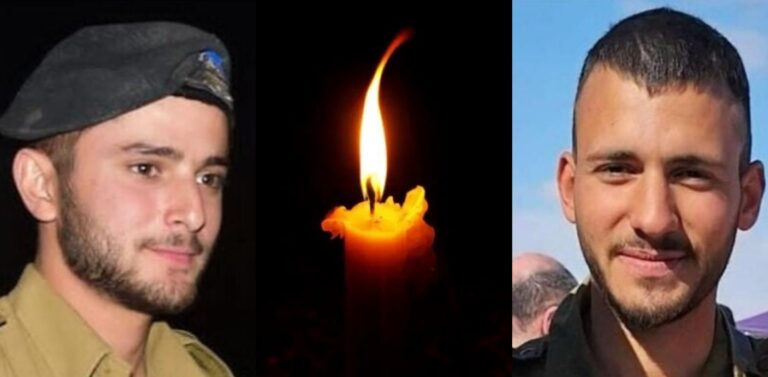Throughout January, the World Health Organization publicly praised China for what it called a speedy response to the new coronavirus. It repeatedly thanked the Chinese government for sharing the genetic map of the virus “immediately,” and said its work and commitment to transparency were “very impressive, and beyond words.”
But behind the scenes, it was a much different story, one of significant delays by China and considerable frustration among WHO officials over not getting the information they needed to fight the spread of the deadly virus, The Associated Press has found.
Despite the plaudits, China in fact sat on releasing the genetic map, or genome, of the virus for more than a week after three different government labs had fully decoded the information. Tight controls on information and competition within the Chinese public health system were to blame, according to dozens of interviews and internal documents.
Chinese government labs only released the genome after another lab published it ahead of authorities on a virologist website on Jan. 11. Even then, China stalled for at least two weeks more on providing WHO with detailed data on patients and cases, according to recordings of internal meetings held by the U.N. health agency through January — all at a time when the outbreak arguably might have been dramatically slowed.
WHO officials were lauding China in public because they wanted to coax more information out of the government, the recordings obtained by the AP suggest. Privately, they complained in meetings the week of Jan. 6 that China was not sharing enough data to assess how effectively the virus spread between people or what risk it posed to the rest of the world, costing valuable time.
“We’re going on very minimal information,” said American epidemiologist Maria Van Kerkhove, now WHO’s technical lead for COVID-19, in one internal meeting. “It’s clearly not enough for you to do proper planning.”
“We’re currently at the stage where yes, they’re giving it to us 15 minutes before it appears on CCTV,” said WHO’s top official in China, Dr. Gauden Galea, referring to the state-owned China Central Television, in another meeting.
The story behind the early response to the virus comes at a time when the U.N. health agency is under siege, and has agreed to an independent probe of how the pandemic was handled globally. After repeatedly praising the Chinese response early on, U.S. President Donald Trump has blasted WHO in recent weeks for allegedly colluding with China to hide the extent of the coronavirus crisis. He cut ties with the organization on Friday, jeopardizing the approximately $450 million the U.S. gives every year as WHO’s biggest single donor.
In the meantime, Chinese President Xi Jinping has vowed to pitch in $2 billion over the next two years to fight the coronavirus, saying China has always provided information to WHO and the world “in a most timely fashion.”
The new information does not support the narrative of either the U.S. or China, but instead portrays an agency now stuck in the middle that was urgently trying to solicit more data despite limited authority. Although international law obliges countries to report information to WHO that could have an impact on public health, the U.N. agency has no enforcement powers and cannot independently investigate epidemics within countries. Instead, it must rely on the cooperation of member states.
The recordings suggest that rather than colluding with China, as Trump declared, WHO was itself kept in the dark as China gave it the minimal information required by law. However, the agency did try to portray China in the best light, likely as a means to secure more information. And WHO experts genuinely thought Chinese scientists had done “a very good job” in detecting and decoding the virus, despite the lack of transparency from Chinese officials.
WHO staffers debated how to press China for gene sequences and detailed patient data without angering authorities, worried about losing access and getting Chinese scientists into trouble. Under international law, WHO is required to quickly share information and alerts with member countries about an evolving crisis. Galea noted WHO could not indulge China’s wish to sign off on information before telling other countries because “that is not respectful of our responsibilities.”
In the second week of January, WHO’s chief of emergencies, Dr. Michael Ryan, told colleagues it was time to “shift gears” and apply more pressure on China, fearing a repeat of the outbreak of Severe Acute Respiratory Syndrome that started in China in 2002 and killed nearly 800 people worldwide.
“This is exactly the same scenario, endlessly trying to get updates from China about what was going on,” he said. “WHO barely got out of that one with its neck intact given the issues that arose around transparency in southern China.”
Ryan said the best way to “protect China” from possible action by other countries was for WHO to do its own independent analysis with data from the Chinese government on whether the virus could easily spread between people. Ryan also noted that China was not cooperating in the same way some other countries had in the past.
“This would not happen in Congo and did not happen in Congo and other places,” he said, probably referring to the Ebola outbreak that began there in 2018. “We need to see the data…..It’s absolutely important at this point.”
The delay in the release of the genome stalled the recognition of its spread to other countries, along with the global development of tests, drugs and vaccines. The lack of detailed patient data also made it harder to determine how quickly the virus was spreading — a critical question in stopping it.
Between the day the full genome was first decoded by a government lab on Jan. 2 and the day WHO declared a global emergency on Jan. 30, the outbreak spread by a factor of 100 to 200 times, according to retrospective infection data from the Chinese Center for Disease Control and Prevention. The virus has now infected over 6 million people worldwide and killed more than 375,000.
“It’s obvious that we could have saved more lives and avoided many, many deaths if China and the WHO had acted faster,” said Ali Mokdad, a professor at the Institute for Health Metrics and Evaluation at the University of Washington.
However, Mokdad and other experts also noted that if WHO had been more confrontational with China, it could have triggered a far worse situation of not getting any information at all.
If WHO had pushed too hard, it could even have been kicked out of China, said Adam Kamradt-Scott, a global health professor at the University of Sydney. But he added that a delay of just a few days in releasing genetic sequences can be critical in an outbreak. And he noted that as Beijing’s lack of transparency becomes even clearer, WHO director-general Tedros Adhanom Ghebreyesus’s continued defense of China is problematic.
“It’s definitely damaged WHO’s credibility,” said Kamradt-Scott. “Did he go too far? I think the evidence on that is clear….it has led to so many questions about the relationship between China and WHO. It is perhaps a cautionary tale.”
WHO and its officials named in this story declined to answer questions asked by The Associated Press without audio or written transcripts of the recorded meetings, which the AP was unable to supply to protect its sources.
“Our leadership and staff have worked night and day in compliance with the organization’s rules and regulations to support and share information with all Member States equally, and engage in frank and forthright conversations with governments at all levels,” a WHO statement said.
China’s National Health Commission and the Ministry of Foreign Affairs had no comment. But in the past few months, China has repeatedly defended its actions, and many other countries — including the U.S. — have responded to the virus with even longer delays of weeks and even months.
“Since the beginning of the outbreak, we have been continuously sharing information on the epidemic with the WHO and the international community in an open, transparent and responsible manner,” said Liu Mingzhu, an official with the National Health Commission’s International Department, at a press conference on May 15.
___________
The race to find the genetic map of the virus started in late December, according to the story that unfolds in interviews, documents and the WHO recordings. That’s when doctors in Wuhan noticed mysterious clusters of patients with fevers and breathing problems who weren’t improving with standard flu treatment. Seeking answers, they sent test samples from patients to commercial labs.
By Dec. 27, one lab, Vision Medicals, had pieced together most of the genome of a new coronavirus with striking similarities to SARS. Vision Medicals shared its data with Wuhan officials and the Chinese Academy of Medical Sciences, as reported first by Chinese finance publication Caixin and independently confirmed by the AP.
On Dec. 30, Wuhan health officials issued internal notices warning of the unusual pneumonia, which leaked on social media. That evening, Shi Zhengli, a coronavirus expert at the Wuhan Institute of Virology who is famous for having traced the SARS virus to a bat cave, was alerted to the new disease, according to an interview with Scientific American. Shi took the first train from a conference in Shanghai back to Wuhan.
The next day, Chinese CDC director Gao Fu dispatched a team of experts to Wuhan. Also on Dec. 31, WHO first learned about the cases from an open-source platform that scouts for intelligence on outbreaks, emergencies chief Ryan has said.
WHO officially requested more information on Jan. 1. Under international law, members have 24 to 48 hours to respond, and China reported two days later that there were 44 cases and no deaths.
By Jan. 2, Shi had decoded the entire genome of the virus, according to a notice later posted on her institute’s website.
Scientists agree that Chinese scientists detected and sequenced the then-unknown pathogen with astonishing speed, in a testimony to China’s vastly improved technical capabilities since SARS, during which a WHO-led group of scientists took months to identify the virus. This time, Chinese virologists proved within days that it was a never-before-seen coronavirus. Tedros would later say Beijing set “a new standard for outbreak response.”
But when it came to sharing the information with the world, things began to go awry.
On Jan. 3, the National Health Commission issued a confidential notice ordering labs with the virus to either destroy their samples or send them to designated institutes for safekeeping. The notice, first reported by Caixin and seen by the AP, forbade labs from publishing about the virus without government authorization. The order barred Shi’s lab from publishing the genetic sequence or warning of the potential danger.
Chinese law states that research institutes cannot conduct experiments on potentially dangerous new viruses without approval from top health authorities. Although the law is intended to keep experiments safe, it gives top health officials wide-ranging powers over what lower-level labs can or cannot do.
“If the virologist community had operated with more autonomy….the public would have been informed of the lethal risk of the new virus much earlier,” said Edward Gu, a professor at Zhejiang University, and Li Lantian, a PhD student at Northwestern University, in a paper published in March analyzing the outbreak.
Commission officials later repeated that they were trying to ensure lab safety, and had tasked four separate government labs with identifying the genome at the same time to get accurate, consistent results.
By Jan. 3, the Chinese CDC had independently sequenced the virus, according to internal data seen by the Associated Press. And by just after midnight on Jan. 5, a third designated government lab, the Chinese Academy of Medical Sciences, had decoded the sequence and submitted a report — pulling all-nighters to get results in record time, according to a state media interview.
Yet even with full sequences decoded by three state labs independently, Chinese health officials remained silent. The WHO reported on Twitter that investigations were under way into an unusual cluster of pneumonia cases with no deaths in Wuhan, and said it would share “more details as we have them.”
Meanwhile, at the Chinese CDC, gaps in coronavirus expertise proved a problem.
For nearly two weeks, Wuhan reported no new infections, as officials censored doctors who warned of suspicious cases. Meanwhile, researchers found the new coronavirus used a distinct spike protein to bind itself to human cells. The unusual protein and the lack of new cases lulled some Chinese CDC researchers into thinking the virus didn’t easily spread between humans — like the coronavirus that casues Middle East respiratory syndrome, or MERS, according to an employee who declined to be identified out of fear of retribution.
Li, the coronavirus expert, said he immediately suspected the pathogen was infectious when he spotted a leaked copy of a sequencing report in a group chat on a SARS-like coronavirus. But the Chinese CDC team working on the genetic sequence lacked molecular specialists and failed to consult with outside scientists, Li said. Chinese health authorities rebuffed offers of assistance from foreign experts, including Hong Kong scientists barred from a fact-finding mission to Wuhan and an American professor at a university in China.
On Jan. 5, the Shanghai Public Clinical Health Center, led by famed virologist Zhang Yongzhen, was the latest to sequence the virus. He submitted it to the GenBank database, where it sat awaiting review, and notified the National Health Commission. He warned them that the new virus was similar to SARS and likely infectious.
“It should be contagious through respiratory passages,” the center said in an internal notice seen by the AP. “We recommend taking preventative measures in public areas.”
On the same day, WHO said that based on preliminary information from China, there was no evidence of significant transmission between humans, and did not recommend any specific measures for travelers.
The next day, the Chinese CDC raised its emergency level to the second highest. Staffers proceeded to isolate the virus, draft lab testing guidelines, and design test kits. But the agency did not have the authority to issue public warnings, and the heightened emergency level was kept secret even from many of its own staff.
By Jan. 7, another team at Wuhan University had sequenced the pathogen and found it matched Shi’s, making Shi certain they had identified a novel coronavirus. But Chinese CDC experts said they didn’t trust Shi’s findings and needed to verify her data before she could publish, according to three people familiar with the matter. Both the National Health Commission and the Ministry of Science and Technology, which oversees Shi’s lab, declined to make Shi available for an interview.
A major factor behind the gag order, some say, was that Chinese CDC researchers wanted to publish their papers first. “They wanted to take all the credit,” said Li Yize, a coronavirus researcher at the University of Pennsylvania.
Internally, the leadership of the Chinese CDC is plagued with fierce competition, six people familiar with the system explained. They said the agency has long promoted staff based on how many papers they can publish in prestigious journals, making scientists reluctant to share data.
As the days went by, even some of the Chinese CDC’s own staff began to wonder why it was taking so long for authorities to identify the pathogen.
“We were getting suspicious, since within one or two days you would get a sequencing result,” a lab technician said, declining to be identified for fear of retribution.
(AP)

